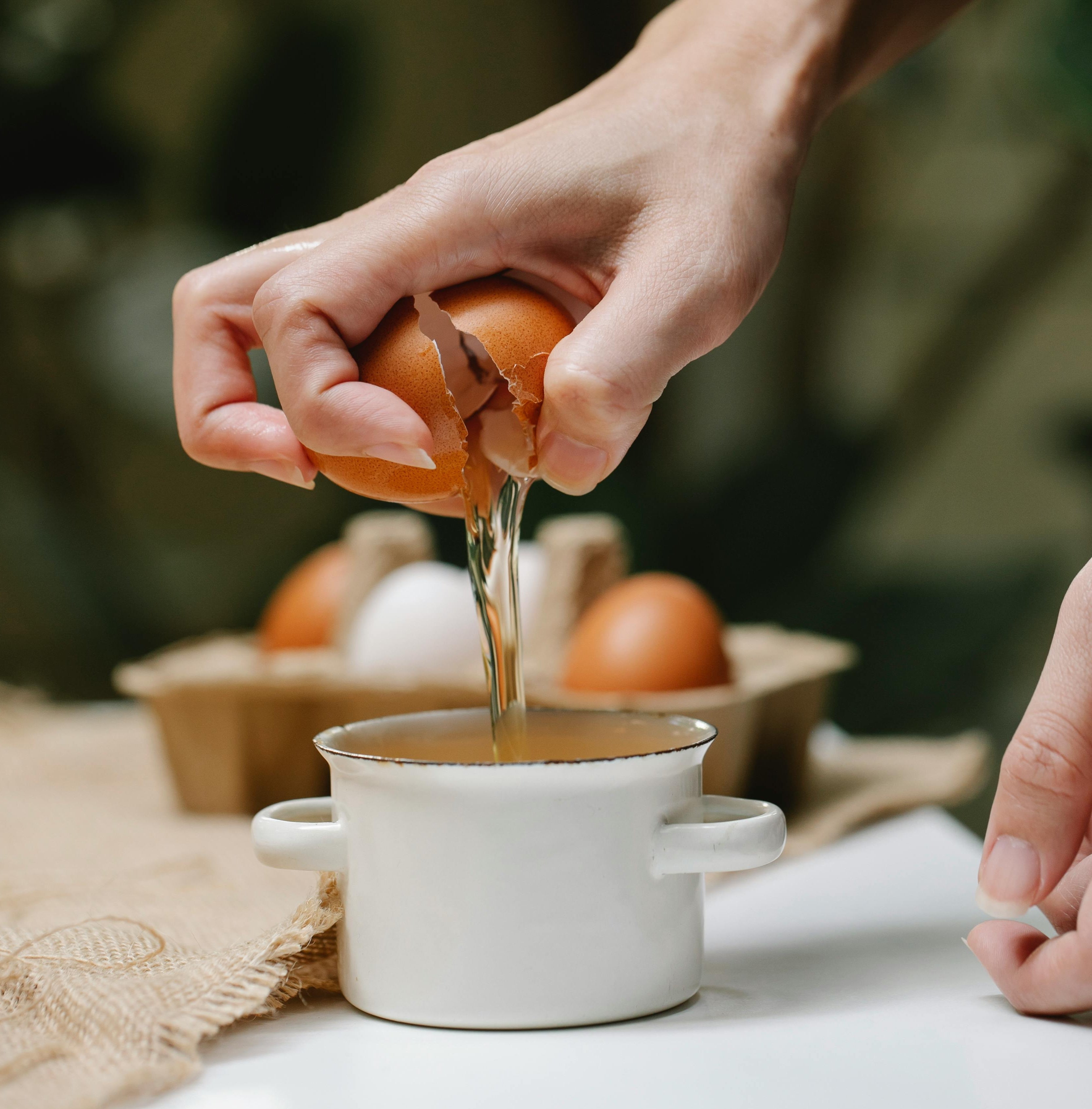Stronger, Longer, Happier: The Protein Prescription for Women Over 40

The importance of Protein for Women Over 40
It's time to talk about protein and why it’s important for staying strong, vibrant, and unstoppable as you move through your 40’s. You see, as we (gracefully) age, our bodies undergo some changes – one being the gradual and progressive loss of muscle mass, otherwise known as sarcopoenia1. Muscle degeneration impacts daily activities and is strongly associated with a greater incidence of injury (cue dramatic music)1. But it’s not all doom and gloom. Incorporating strength training exercises and consuming sufficient protein can help counteract this loss, preserving muscle mass and strength2.
Longevity and Metabolic Health
Studies have shown that a protein-packed diet can help ward off those really annoying age-related diseases, keep your bones strong as steel, and even give your skin that enviable glow. So, think of protein as your fountain of youth. Collagen is made up of amino acids, which are the building blocks of protein. So, when you chow down on protein-rich foods like chicken, fish, beans, and nuts, you're not just fuelling your muscles – you're also giving your skin a boost by providing the raw materials it needs to produce collagen and reduce the appearance of fine lines and wrinkles3.
By preserving muscle mass and keeping you feeling fuller for longer, protein consumption helps sustain metabolic rate, thereby supporting weight management and reducing the risk of metabolic disorders such as diabetes and cardiovascular diseases4. Furthermore, protein-rich foods contain essential nutrients necessary for cellular cleaning and repair, which help to maintain our energy levels as we age5. Therefore, incorporating good quality protein sources into your diet (see below) not only promotes muscle strength and skin health but also fosters metabolic wellbeing and cellular longevity in women approaching their 40s. Who knew protein was such a multitasker?
How much protein does a fabulous 40s lady really need?
Generally, for women in their 40s, shooting for around 0.8 grams of protein per kilogram of body weight per day is the sweet spot. Depending on body weight you should likely be aiming for 20-30 grams of protein per meal.
So, embrace the power of protein. It’s not just about building muscles; it’s about building a life full of strength, vitality, and endless possibilities. Here’s to being strong, being radiant, and being unapologetically you – because you, my friend, are a force to be reckoned with!
What are the best types of protein for navigating perimenopause?
Not all proteins are created equal, and when it comes to fulfilling the nutritional needs of women over 40, quality matters. Including a variety of complete protein sources in your diet ensures you get the essential nutrients your body needs:
Lean Meats: Lean meats like chicken, turkey, and fish provide complete protein along with iron, zinc, and B vitamins. While lean red meats such as beef and lamb can be beneficial, especially during heavy menstruation, moderation is key to minimise saturated fat intake and reduce the risk of cardiovascular issues.
Eggs: Eggs are a powerhouse of protein, also packing vitamin D and choline for bone health and cognitive function. Greek yogurt and cottage cheese offer convenient options with protein, calcium, and probiotics for gut health. Aim for three eggs per meal to ensure sufficient protein!
Plant Proteins: For plant-based protein, legumes like beans, lentils, and chickpeas are rich in both protein and fibre, keeping you full and nourished. Tofu and tempeh, derived from soy, are versatile protein sources suitable for various dishes.
Wholegrains: Wholegrains like quinoa, amaranth, and buckwheat are not only protein-rich but also gluten-free, packed with nutrients like magnesium and iron. Their high fibre content helps regulate blood sugar, stabilizing mood.
Fatty fish: such as salmon, mackerel, and sardines provide protein and omega-3 fatty acids, offering relief from symptoms like hot flashes and mood swings.
Chia seeds and flaxseeds: Besides being protein-rich, contain omega-3 fatty acids that combat inflammation and support brain health.
Collagen peptides: Tasteless and easily incorporated into beverages or soups, offer a solution to declining collagen production as we age. Supplementing with collagen protein supports collagen synthesis, addressing issues like wrinkles, joint pain, and bone loss in our 40s.
Suggestions on Using Protein Powder in Foods:
Incorporating protein powder into your diet can be a convenient way to boost your protein intake, especially for busy women on the go. Our chocolate protein powder can be added to a variety of foods, including smoothies, porridge and baked goods (see some example recipes below):
Chocolate Protein Smoothie
1 banana
5-6 ice cubes
1 scoop of chocolate protein powder
1 tbsp peanut butter
1tsp cinnamon
1tsp maple syrup / honey
½ cup of milk of choice / coconut water
Blitz together and enjoy!
Chocolate Porridge
1 cup of oats
2 cups of water
1tsp cinnamon
2tbsp chocolate protein powder
4tbsp milk of choice
Toppings: Banana, almonds, cacao nibs
Stir all the ingredients — except for the protein powder and milk— in a saucepan on low heat until creamy. Meanwhile prepare your protein cream by whisking together the protein powder and oat milk until there are no lumps.
Once porridge achieves the desired consistency, remove it from heat and add in the protein cream, mix well. Transfer it into your bowl.
Chocolate Protein Cookies
90g dairy free butter
100g dark muscovado sugar
2tbsp milk of choice
90g self-raising flour
30g chocolate protein powder
30g hazlenuts roughly chopped
½ tsp baking powder
Pinch of sea salt
Chocolate chunks to top the cookies
6 tsp chocolate hazelnut spread
Line a baking tray with baking parchment and spoon 6 individual teaspoons of chocolate hazelnut spread onto a tray. Pop in the freezer for an hour to harden.
In a large bowl, cream together the butter and sugar until light in colour.
Add the milk and whisk until combined.
Mix the remaining ingredients together in a bowl (excluding the chocolate chunks) and once combined add to the wet mixture and mix until you form a cookie dough.
Split the cookie dough into six equal pieces, it should be firm, but not too crumbly and not too wet.
Roll each piece of cookie dough into a ball, flatten with the palm of your hand. Place a teaspoon of the frozen chocolate hazelnut spread in the centre. Wrap the cookie dough around it so it is encased in the mix. Continue to do with the five remaining pieces.
Place the cookie dough well-spaced out on baking trays and bake for 10 minutes in a preheated oven at 180 °c. Take the cookies out whilst they are still a little soft as they will harden as they cool.
Press the chocolate chunks into the dough whilst the cookies are still warm and enjoy!
References:
- Ardeljan AD, Hurezeanu R. Sarcopenia.StatPearls. 2024
- Korat A.V, Shea M.K, Jacques P, Sebastiani P, Wang M, Eliassen A, Willett W, Sun Q. Dietary protein intake in midlife in relation to healthy aging – results from the prospective Nurses’ Health Study cohort, The American Journal of Clinical Nutrition, 2024. 119 (2); 271-282
- Cao C, Xiao Z, Wu Y, Ge C. Diet and Skin Aging-From the Perspective of Food Nutrition. Nutrients. 2020 Mar 24;12(3):870.
- Stein W, Sauer HJ, Oberänder N, Weimann A, Fischer M. Effects of Additional Protein Intake on Lean Body Mass in Patients Undergoing Multimodal Treatment for Morbid Obesity. Nutrients. 2024 Mar 16;16(6):864.
- Shertzer HG, Krishan M, Genter MB. Dietary whey protein stimulates mitochondrial activity and decreases oxidative stress in mouse female brain. Neurosci Lett. 2013 Aug 26;548:159-64
- Tags: exercise hormones Ingredients mood Nutrition


